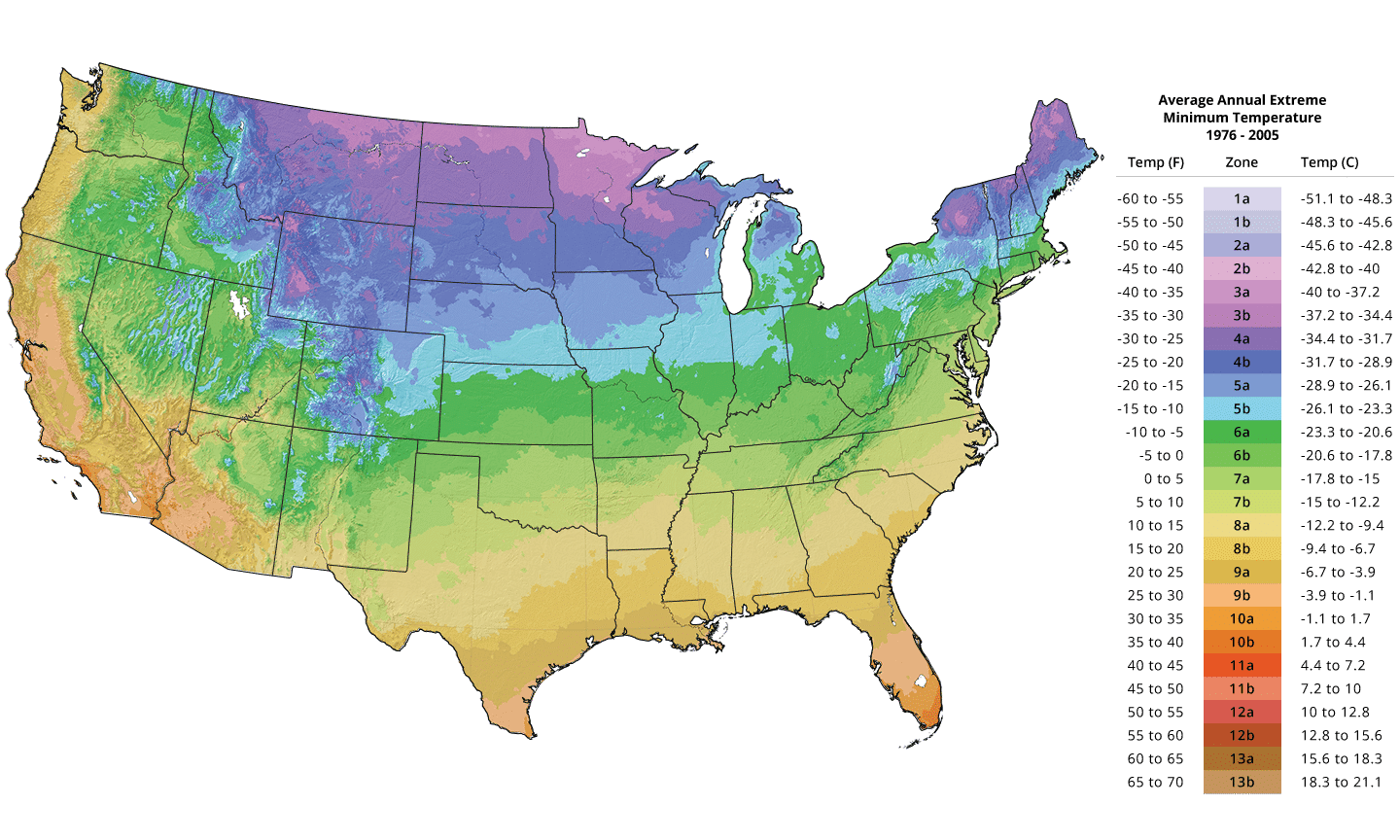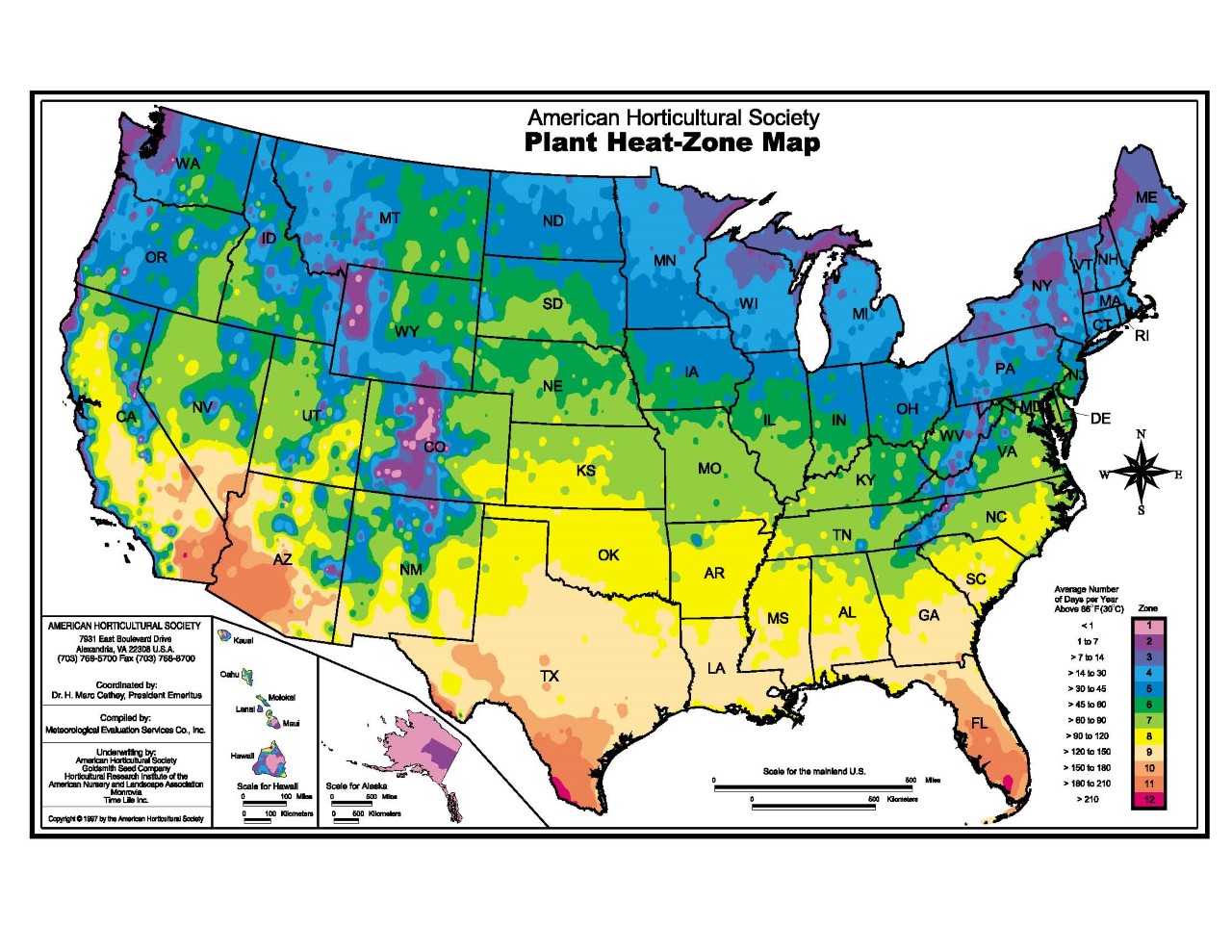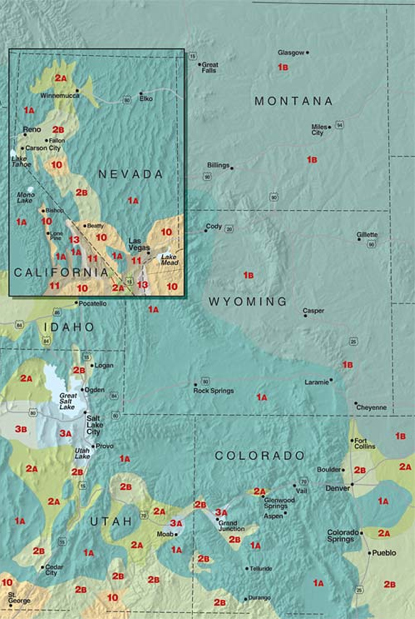What are Growing Zones?
USDA Cold Hardiness Zones
Planting zones or growing zones are illustrated on a map known as the USDA Plant Hardiness Zone Map. The US Department of Agriculture divided out the map of the US in areas which range from planting zone 1A to planting zone 13B. These are areas which range in minimum temperatures from -60 degrees Fahrenheit to 70 degrees Fahrenheit.

Know your growing zone! Growing zones help gardeners understand which plants can survive their region’s climate. Click on the link, enter your zip code and your hardiness growing zone will be displayed:
Resources - Cold Hardiness Zones:USDA Hardiness Zones
Hardiness Zones - Utah
AHS Heat Zones
Heat zones are the high-temperature equivalent of cold hardiness zones. The American Horticultural Society (AHS) developed a “Plant Heat Zone Map” that also divides the country into twelve numbered zones.
So, what are heat zones? The map’s twelve zones are based on the average number of “heat days” per year – days that temperatures rise above 86 F. (30 C.).
The area with the least heat days
(less than one) is in zone 1, while those with the most (more than 210) heat days are in zone 12.

Sunset Climate Zones
A plant's performance is governed by the total climate: length of growing season, timing and amount of rainfall, winter lows, summer highs, wind, and humidity.
Sunset's climate zone maps take all these factors into account, unlike the familiar hardiness zone maps devised by the U.S. Department of Agriculture, which divides most of North America into zones based strictly on winter lows.

Sunset Climate Zones

